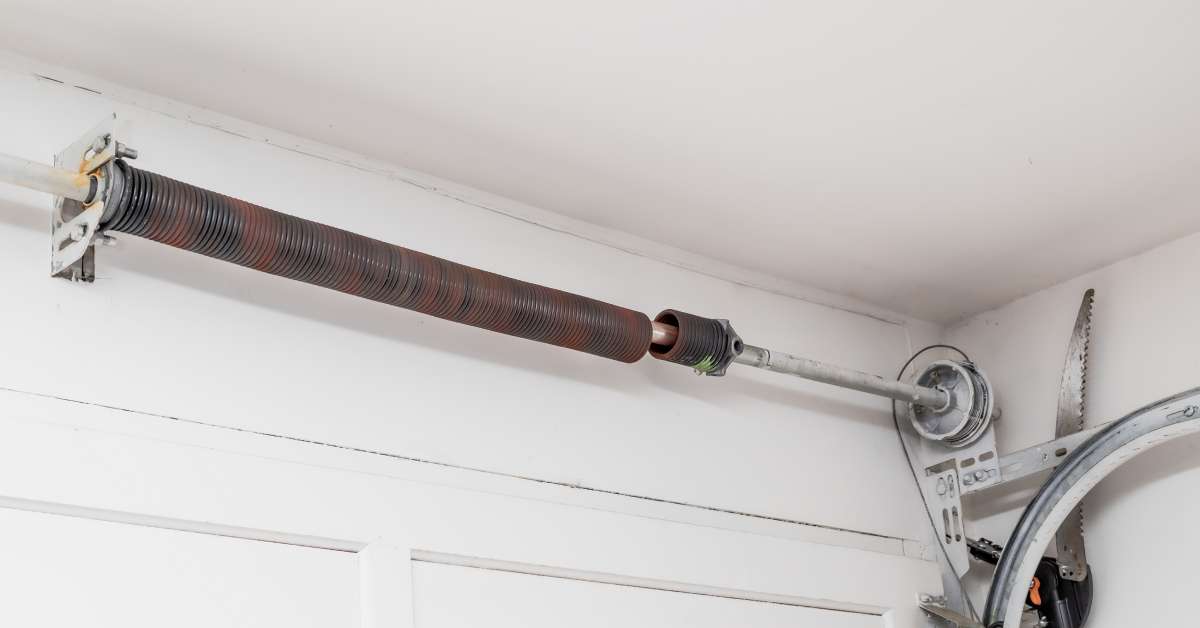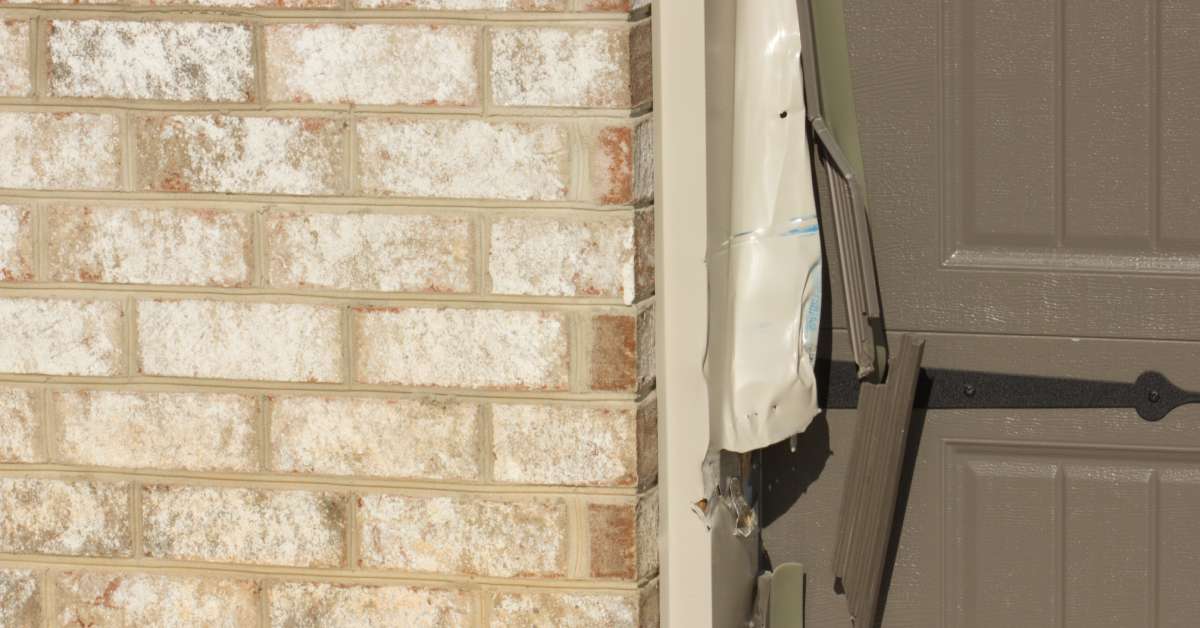A properly functioning garage door enhances your home’s security and functionality. However, like any other mechanical system, garage doors can experience issues. Understanding the most common problems can help you troubleshoot and potentially fix minor issues or recognize the need for professional intervention. This quick guide to identifying common garage door problems will walk you through the possible causes of various malfunctions and how to address them.
Noisy Operation
Excessive noise during operation is a clear indicator of a problem. If something is wrong with the garage door, you might hear grinding, squeaking, or rattling sounds every time you open or close it. Possible causes might be worn-out rollers, lack of lubrication, or loose hardware.
Follow these steps to clean and lubricate your garage door:
- Close your garage door and switch off the power to the opener if available.
- Clean the inside and outside of the tracks with a damp cloth to remove dust and debris. Avoid using any lubricant on the tracks.
- Open the door and apply lubricant to each hinge where it meets the track bend.
- Thoroughly lubricate the rollers, focusing on the tiny ball bearings inside each. Wipe away any excess lubricant. Do not lubricate nylon rollers.
- Apply lubricant to the springs and bearing plates at the top of the door, then open and close the door to spread the grease evenly.
- Lubricate the armbar and lock, if present.
- Lubricate the top of the rail where the chain rides, using a rag to spread the grease.
If the noise persists after lubricating, check for any loose screws or bolts and tighten them as needed. For worn-out rollers or other significant components, it’s advisable to replace them or get a professional inspection.
The Door Won’t Open or Close
It’s frustrating when you press the control button and the garage door refuses to open or close. Possible causes for this problem include a misaligned sensor, a broken spring, or an issue with the door’s power source.
First, ensure that the sensors at the bottom of the garage door are correctly aligned and free of obstructions. If that doesn’t resolve the issue, inspect the springs for any visible signs of damage. If you find a broken spring or suspect an electrical issue, it’s best to call a professional technician for repair. Garage door springs are under high tension and can be dangerous to handle without proper training. Additionally, electrical malfunctions require specialized knowledge to address safely and prevent further damage.
Misaligned Tracks
If your garage door is off-track, it won’t operate smoothly and could become a safety hazard. Signs of misalignment include uneven or shaky movement of the door and visible gaps between the rollers and tracks. Loose screws, accidental impacts, or prolonged wear and tear can cause misaligned tracks.
To identify this common garage door problem, disconnect the door from the opener by pulling the emergency release cord. Then, use a level to check the alignment of the tracks and tighten any loose screws or bolts that hold the tracks in place. If the misalignment is severe or you’re unsure about how to handle it, consult a professional technician.
Remote Control Problems
A garage door remote control allows you to conveniently open and close your garage door from a distance with the push of a button. When the remote control stops working, it disrupts the ease of accessing your garage. Consider the most common factors that cause remote control issues, from dead batteries to a faulty controller.
Dead Batteries
One of the most prevalent issues with garage door remote controls is dead batteries. When the batteries are depleted, it prevents the remote from sending a signal to the opener, leading to inoperability. To fix this, simply replace the batteries with new ones, ensuring they are installed in the correct orientation as indicated in the remote’s user manual.
Signal Interference
Signal interference occurs when electronic devices in the vicinity disrupt the communication between the remote and the garage door system. This can be caused by wireless routers, cordless phones, or other devices operating on similar frequencies. To resolve this issue, try moving or turning off nearby electronic devices and see if the remote regains functionality.
Misaligned Antenna
A misaligned or damaged opener antenna can hinder the reception of signals from the remote control. This issue is often identifiable if the antenna is visibly bent or obstructed. To correct this, gently straighten the antenna or remove any obstructions to direct the antenna toward where the remote is typically used.
A Faulty Remote
A faulty remote control with internal circuitry issues can lead to inconsistent garage door operation. This problem can be diagnosed if the remote fails sporadically despite having new batteries and no interference. The remedy is to take the remote to a professional for repair or replace the remote if it’s irreparably damaged.
Visible Damage
Visible damage to the garage door affects its appearance and can hamper its functionality. Damage includes dents, cracks, or bent panels that might impair the door’s movement. Accidental impacts, weather conditions, or general wear and tear over time can cause these types of damage.
For minor dents and scratches, you can use a rubber mallet and some wood blocks to try to pop them out. Cracked panels might require patching or sealing, depending on the material of your garage door. However, severe damage often necessitates replacement of the affected panels or professional repair services.
Slow Response Time
A slow response time can be particularly annoying, especially when you’re in a hurry. This issue is characterized by a noticeable delay between pressing the control button and the door’s movement. Possible causes could be related to the door opener’s settings or worn-out parts.
Begin by checking the door opener’s settings and adjusting the speed if possible. If the problem persists, inspect the rollers and tracks for dirt or obstructions that may be hindering movement. Cleaning and correctly lubricating components might resolve the issue, but if not, a professional inspection is recommended.
Alliance Overhead Door is an experienced garage door company in Austin, TX, specializing in repairing and replacing overhead garage doors and openers. If you experience slow response times with your door or any of the other problems mentioned in this list, give us a call for fast and friendly service.
The Door Reverses Immediately
Sometimes, a garage door starts to close but then immediately reverses. This is a safety feature typically triggered by an obstruction in the door’s path or misaligned sensors.
Check the sensors at the base of the door to ensure they are aligned and free of debris. Clean the sensor lenses to make sure they are functioning correctly. If there are no visible obstructions and the problem continues, you may need to adjust the sensor alignment or consult a professional for further diagnosis.
By understanding these overhead garage door issues, you can address minor problems and make informed decisions about seeking professional help. Regular maintenance, such as keeping the sensors unobstructed and lubricating moving parts, can prevent unexpected disruptions. Whether you’re experiencing problems with the remote control or the garage door’s components, our team at Alliance Overhead Door can inspect and repair these systems quickly. To prevent recurring problems, you can schedule a routine inspection with one of our qualified technicians.


